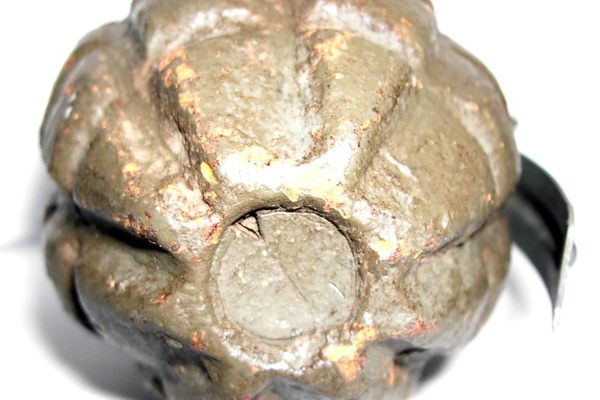Found: A Real Human Skull in a Museum Diorama
It’s apparently going to go back on display?

At the Carnegie Museum of Natural History in Pittsburgh, it was long known that the human figure in one of the museum’s most famous exhibits had real human teeth. Recently, though, a CT scan revealed that the figure’s head was sculpted onto a real human skull, reports the Pittsburgh Post-Gazette.
The exhibit shows a man on camelback fighting off three Barbary lions. The diorama was displayed for many years under the title “Arab Courier Attacked by Lions,” but the museum recently changed the title to “Lion Attacking a Dromedary,” a translation of the original French title.
The museum worked with the local medical examiner’s office to scan the entire exhibit as part of a restoration. The head is the only part of the man that’s built using human bones; the rest of the figure is a mannequin.

The diorama’s creator, Edouard Verreaux, worked with his brother Jules to collect and trade natural history specimens in the 1830s and 40s. They were working at a time when it was acceptable in Europe to steal and display human body parts from non-white people, who were often considered less than human. The Verreaux brothers’ most infamous piece of taxidermy was made from the skin and skull of an African man, whose body Jules Verreaux secretly exhumed after witnessing the man’s burial.
The museum staff told the Post-Gazette that since there’s little information about the origins of the skull in this diorama, the museum is not considering repatriation. A curator also suggested to the Pittsburgh Tribune-Review that it could have been stolen from the catacombs of Paris.
The piece reflects a style of 19th century taxidermy that’s long been outdated and was considered tacky even in its day. As the Post-Gazette reports, the piece was originally acquired by the American Museum of Natural History but put in storage after being judged “too theatrical, too gauche, and thus not scientifically worthy of museum display.”
In recent decades, museums have been working to repatriate the human remains in their collections, in recognition that past racism in science need not have a place in modern museums. The remains of the man the Verreaux brothers taxidermied, for instance, were returned to Botswana in the ‘90s. Some museums, though, have chosen to keep or keep on display human remains, even after tribal governments have requested that they be returned.
Items that don’t have a clear provenance are more difficult to handle. In a 2011 report on the Smithsonian’s repatriation efforts, the Government Accountability Office noted that the relevant law “does not discuss how to handle human remains and objects that cannot be culturally affiliated.” The two museums considered in the report had different approaches to those items. The Natural History museum retained these objects; the American Indian Museum worked with tribes to take a custodial role for items that didn’t have obvious provenance. “The American Indian Museum’s philosophy is to ultimately not have any human remains or associated funerary objects within its collection,” the GAO reported.
The Carnegie Museum of Natural History intends to put the skull back on display and is planning a symposium to discuss its “historical and intellectual context.”




















Follow us on Twitter to get the latest on the world's hidden wonders.
Like us on Facebook to get the latest on the world's hidden wonders.
Follow us on Twitter Like us on Facebook